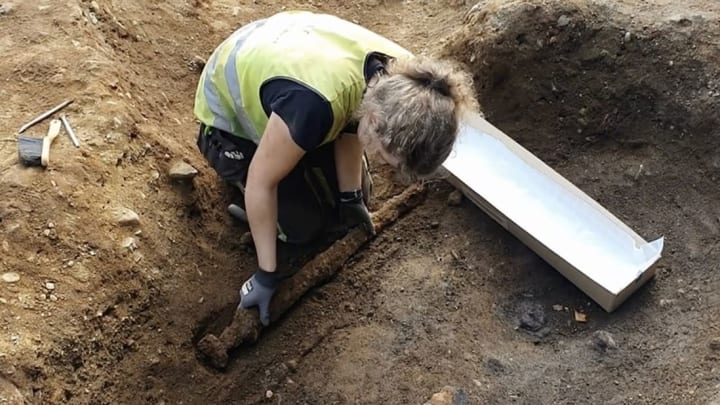On its own, an ancient Viking sword recently discovered in central Norway looks typical for the time period. But the way it was buried could reveal information about its owner. As Gizmodo reports, the weapon was unearthed from the left side of a grave, suggesting it was wielded by a left-handed Viking.
Archaeologists from Norwegian University of Science and Technology (NTNU) uncovered the artifact near the village of Vinjeøra in Norway. The area was the site of a Viking farm during the 9th and 10th centuries, and it's being excavated to make room for the expansion of highway E39. In addition to its agricultural history, the land was also used as a burial site.
The sword was one of serval weapons buried in a ring ditch surrounding the burial mound of a Viking warrior. This configuration indicates that the interred Viking was someone important. His grave overlaps those of two other people. It's unclear why the bodies were buried so close, but archaeologists say they were likely the Viking's relatives, and the arrangement symbolizes the importance of familial relationships in the physical and spiritual realms.
NTNU archaeologist Astrid Kviseth described the newly uncovered sword as surprisingly heavy. It was discovered on the left side of the grave, which is unusual for Viking burials. Normally, Vikings are buried with their weapon at their right hand, even though they sheathed their sword on their left side to make it easier to access during battle. The reversed configuration possibly signified that Vikings viewed the afterlife as a "mirror image" of life on Earth. Because the Viking grave found near Vinjeøra was found with the sword on his left side, he was likely left-handed.
The hefty sword was discovered heavily corroded, so any details that could reveal more information about its origins are hidden. NTNU researchers have brought it to a conservation laboratory where it will be further analyzed using an X-ray machine.
[h/t Gizmodo]
